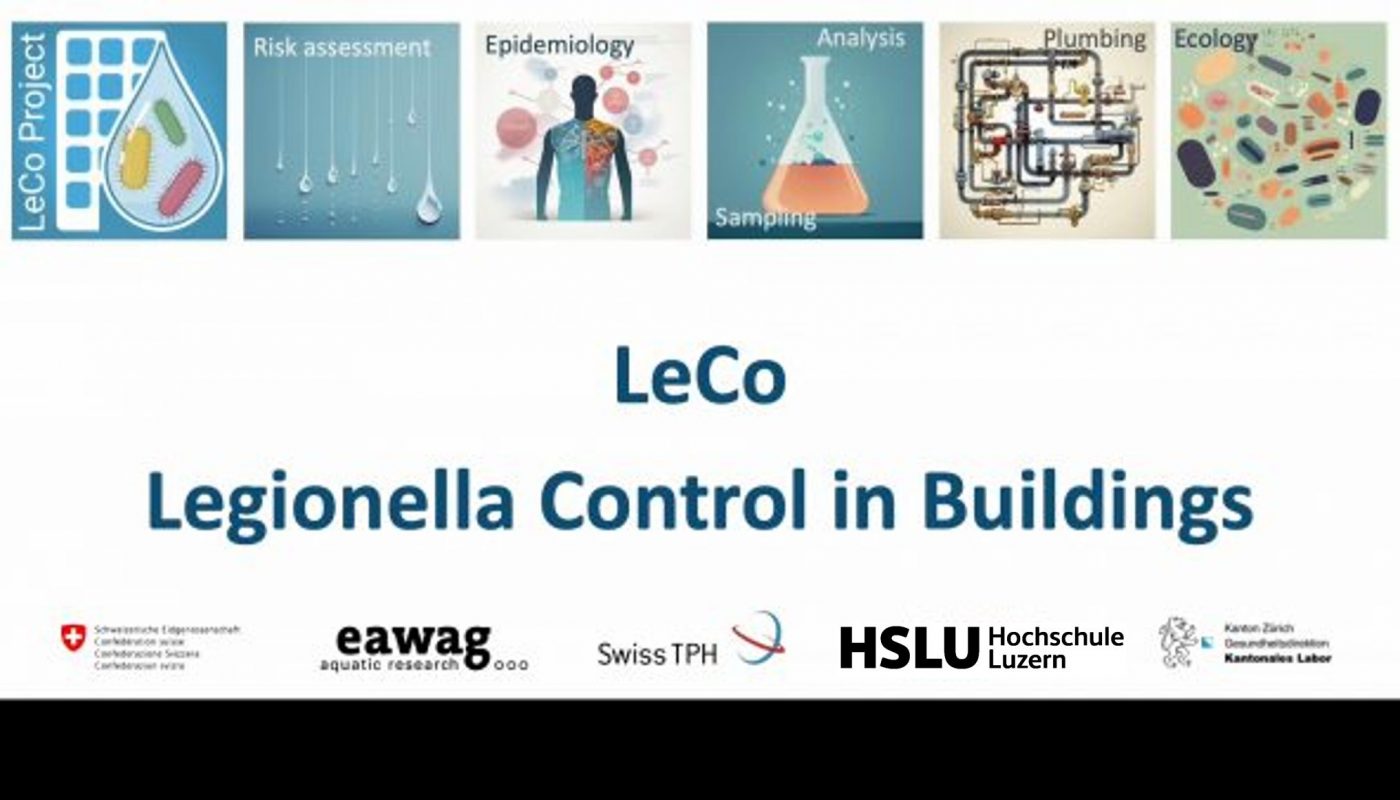Over the past five years, the LeCo project investigated various topics related to Legionella, including risk assessment, source identification, detection methods, ecology, and control strategies in building water systems. Many findings from the project are already shared through peer-reviewed publications. In addition, we produced a series of videos that summarize selected findings and insights from the project. The videos are available with subtitles in the three main Swiss national languages (German, French, Italian) and in English through the links below:
- The LeCo Project “Overview and general introduction (Frederik Hammes, Eawag)
- Risks of Legionella pneumophila infections from showers (Tim Julian, Eawag)
- Rapid identification of Legionella by qPCR (Hans Peter Füchslin, HSLU/KLZH)
- Quantification of Legionella pneumophila in building potable water systems: A meta-analysis comparing qPCR and culture-based detection methods (Emile Sylvestre, TUDelft/Eawag)
- Investigating sources of infection of Legionnaires’ disease in Switzerland: what role do showers play? (Melina Bigler and Daniel Mäusezahl, SwissTPH)
- Experience from laboratory and field measurements of plumbing systems (Dave Morgenthaler, HSLU)
- The perfect water heater (Reto von Euw, HSLU)
- Stagnation, flushing and Legionella spp. (Frederik Hammes, Eawag)
- Ecological insights on Legionella in engineered aquatic systems (Alessio Cavallaro, Eawag)
- Expansion, restructuring and characterization of the Legionellaceae family (Marco Gabrielli, Eawag)
- Chemical disinfection against Legionella in building plumbing systems (Antonia Eichelberg, Eawag)
These videos only represent a selection of sub-topics covered during the LeCo Project and are intended as knowledge sharing and to foster discussion on this important field. For questions, please contact the presenting researcher directly, or the LeCo coordination team via the comment field at the bottom of this blog.
DISCLAIMER: The content of the videos reflects the findings and opinions of the researchers involved in the project. They do not necessarily represent the views and final conclusions of the funding agencies. All subtitles and translations were generated with the assistance of AI. While efforts have been made to ensure accuracy, occasional linguistic mismatches or errors may occur.



